Home>Garden Essentials>How To Make Grass Seed Grow Faster
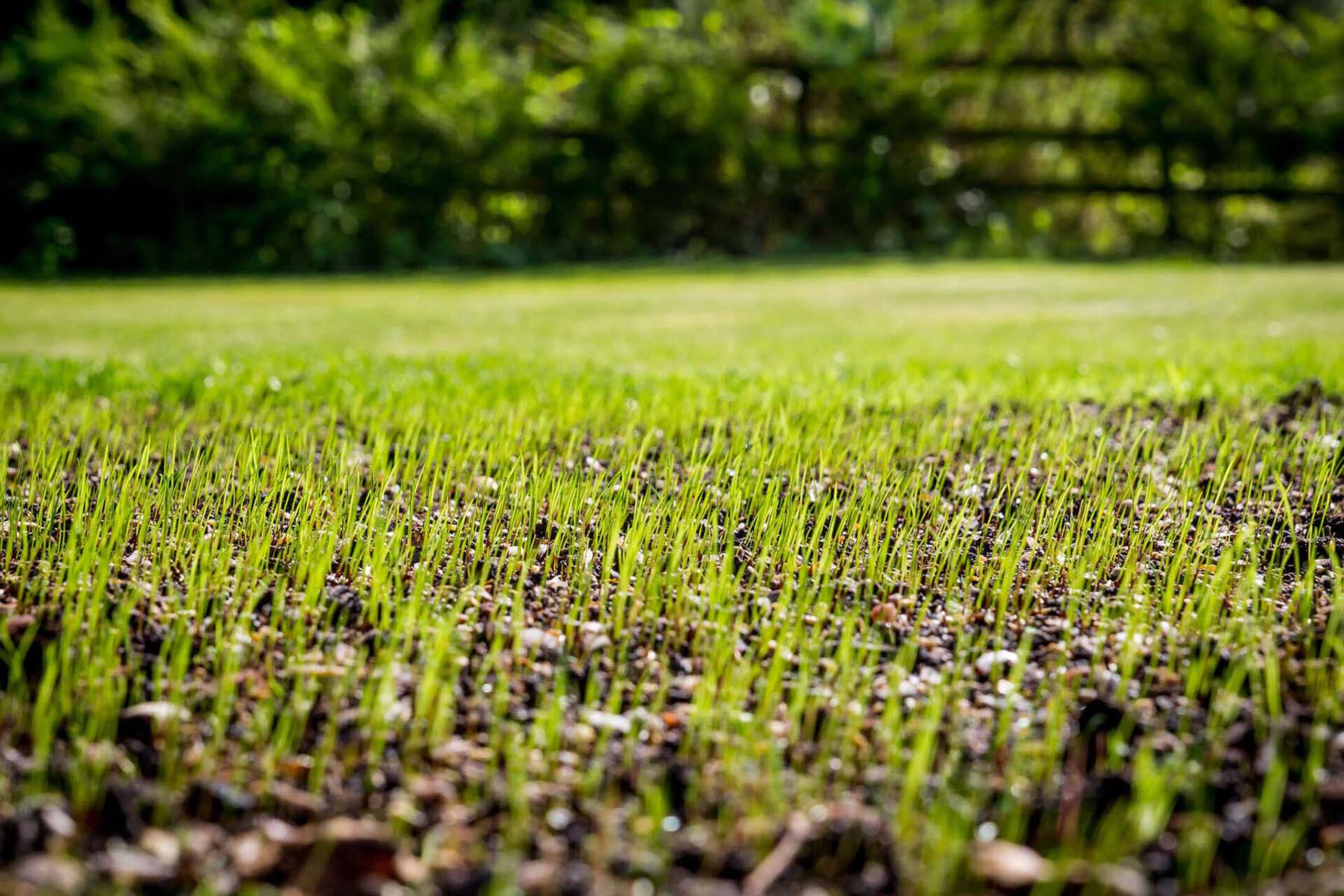

Garden Essentials
How To Make Grass Seed Grow Faster
Modified: October 18, 2024
Discover effective techniques to make grass seed grow faster in your garden. Follow these expert tips and achieve a lush green lawn in no time.
(Many of the links in this article redirect to a specific reviewed product. Your purchase of these products through affiliate links helps to generate commission for Storables.com, at no extra cost. Learn more)
Introduction
Welcome to the wonderful world of gardening! If you’re looking to create a lush and vibrant lawn, one of the key elements is growing grass seed. While it may seem like a straightforward process, there are several factors that can influence the speed at which grass seed germinates and grows. In this article, we will explore various strategies and techniques to help you make your grass seed grow faster and achieve the beautiful lawn you desire.
Before we delve into the specific steps, it’s important to have a basic understanding of the growth process of grass seed. Grass seed goes through several stages before it becomes a mature plant, ranging from germination to root development and eventually, foliage growth. Each of these stages requires specific conditions and care to ensure optimal growth.
One of the first steps towards ensuring success is preparing the soil properly. The quality and structure of the soil play a crucial role in providing the necessary nutrients and support for grass seed germination and root development. We will discuss the steps involved in preparing the soil in detail, including proper soil testing, amendment, and preparation techniques.
The next key factor is choosing the right grass seed for your specific needs and growing conditions. With the wide variety of grass seed options available, it’s essential to select a type that is suitable for your climate, sunlight exposure, and desired aesthetic. We will explore the different types of grass seed and offer guidance on selecting the best one for your lawn.
Once you have the right grass seed, it’s time to plant it effectively. Planting techniques can impact the speed and success of grass seed germination. We will cover the proper planting depth, spacing, and watering techniques to ensure optimal results.
Watering and moisture control are critical factors that directly influence the growth of your grass seed. Proper watering helps to maintain the right level of soil moisture, facilitating seed germination and root development. We will discuss watering strategies, including frequency, timing, and methods to ensure your grass seed receives the moisture it needs to thrive.
While water is essential, so is sunlight. Grass seed requires adequate sunlight to produce energy through photosynthesis and promote healthy growth. We will provide insights on the ideal sunlight conditions for your grass seed and offer tips on maximizing sunlight exposure in your lawn.
In addition to water and sunlight, fertilizing your grass seed can provide essential nutrients and promote faster growth. We will cover the best fertilization practices for grass seed, including choosing the right fertilizer type, application techniques, and frequency.
Another important aspect of growing grass seed faster is preventing weed growth. Weeds compete with grass seed for nutrients, sunlight, and water, hindering its growth and establishment. We will discuss effective weed control strategies to keep your lawn free from unwanted invasive plants.
Lastly, regular maintenance and care play a vital role in nurturing your grass seed into a thriving lawn. We will provide guidance on ongoing lawn care practices such as mowing height, proper watering, and seasonal maintenance tasks to ensure the continued growth and health of your grass seed.
By following these steps and implementing the tips and techniques we will share in this article, you will be well on your way to making your grass seed grow faster, resulting in a stunning, lush lawn that you can enjoy for years to come. Let’s get started!
Key Takeaways:
- Prepare your soil, choose the right grass seed, and provide consistent watering and sunlight to help your grass seed grow faster and create a lush, vibrant lawn.
- Regular maintenance, proper fertilization, and weed control are essential for nurturing healthy grass seed growth and maintaining a beautiful, thriving landscape.
Read more: How To Make Zoysia Grass Grow Faster
Understanding the Growth Process of Grass Seed
Before you embark on your journey to make your grass seed grow faster, it’s essential to have a solid understanding of the growth process it goes through. Grass seed undergoes a series of stages, each with its own requirements and considerations. By comprehending these stages, you can provide the necessary conditions and care to encourage proper growth.
The first stage of grass seed growth is germination. This is when the seed absorbs water, swells, and eventually sprouts a small root, followed by a shoot. During this phase, the seed starts to break down stored nutrients to provide energy for development. To facilitate germination, the seed needs adequate moisture and warmth. Typically, a soil temperature between 50 and 65 degrees Fahrenheit (10 to 18 degrees Celsius) is optimal for most grass species.
Once the seed has germinated, it moves into the next stage called root development. During this stage, the tiny root continues to grow and establish itself in the soil. It absorbs water and nutrients from the surrounding soil, providing the foundation for the grass plant’s overall health and vigor. Adequate soil moisture is crucial during root development to prevent the young roots from drying out and encourage their steady growth. Proper watering practices play a vital role in nurturing the roots and promoting healthy grass growth.
After root development, the grass seed enters the foliage growth stage. During this phase, the grass plant develops its blades, growing taller and lusher. This is where the lawn starts to take shape, with the blades filling in and creating a green carpet. Foliage growth is heavily dependent on factors such as sunlight, water, and nutrients. Providing the right conditions in terms of proper sunlight exposure, regular watering, and adequate fertilization is essential for promoting vigorous foliage growth.
The final stage of grass seed growth is maturity. This is when the grass plant has fully developed and achieved its optimal size and density. At this stage, the grass plant is better equipped to withstand stressors such as foot traffic, drought, and disease. Depending on the type of grass seed you have planted, the maturity stage may vary. Some grass species mature quickly, while others take longer to reach their full potential.
By understanding the growth process of grass seed, you can make informed decisions and provide the necessary care and conditions at each stage. From proper watering to ensuring adequate sunlight exposure and providing essential nutrients, a holistic approach to lawn care will result in faster and healthier grass seed growth. In the following sections, we will delve deeper into the specific techniques and strategies to help you make your grass seed grow faster and achieve a lush and vibrant lawn.
Preparing the Soil for Grass Seed Planting
One of the crucial factors in making your grass seed grow faster is preparing the soil properly. The quality and condition of the soil directly impact the germination and development of the grass seed. By taking the time to prepare the soil adequately, you can create an optimal environment for the seed to establish and grow.
Before you start any soil preparation, it’s essential to test the soil’s pH level and nutrient content. A soil test will provide valuable information about the soil’s acidity or alkalinity (pH) and its nutrient levels. You can easily obtain a soil testing kit from your local garden center or send a sample to a professional laboratory for analysis. The results will help you determine if any amendments are needed before planting your grass seed.
If the soil pH is too high (alkaline) or too low (acidic), you may need to adjust it to create a more favorable growing environment for grass seed. Lime can be used to raise the pH, while sulfur or iron sulfate can lower it. Follow the recommendations from your soil test results and consult with a local gardening expert for specific guidance.
In addition to adjusting the pH, you may also need to amend the soil by adding organic matter such as compost or well-rotted manure. Organic matter improves the soil’s structure, drainage, and nutrient-holding capacity, ensuring optimal conditions for grass seed growth. Spread a layer of compost or manure across the surface of the soil and use a rake or garden fork to mix it thoroughly.
Before planting the grass seed, it’s crucial to prepare the soil by removing any existing vegetation, including weeds, rocks, and debris. Use a garden rake or a mechanical tiller to clear the area and loosen the top layer of soil. This will help the grass seed roots penetrate easily into the soil and establish a strong foundation.
Once the soil is cleared and amended, it’s time to level the surface. Uneven soil can lead to water pooling and uneven grass growth. Use a leveling rake or a lawn roller to smooth out any bumps or depressions in the soil. Aim for a relatively even and level surface for optimal grass seed germination and growth.
Last but not least, consider adding a thin layer of topsoil to enhance the soil’s fertility and provide a better growing medium for the grass seed. This step is especially important if your existing soil is sandy or lacks essential nutrients. Spread a layer of topsoil evenly across the prepared area and use a rake to smooth it out.
By taking the time to properly prepare the soil before planting your grass seed, you are giving it the best chance to establish and grow quickly. Remember to test the soil, adjust the pH if necessary, amend with organic matter, clear the area of debris, level the surface, and consider adding topsoil if needed. These steps will create an optimal environment for your grass seed to thrive and result in faster and healthier growth.
Choosing the Right Grass Seed
When it comes to making your grass seed grow faster, choosing the right type of grass seed is paramount. The key is to select a variety that is well-suited to your specific climate, sunlight exposure, soil type, and intended use of your lawn. By choosing the right grass seed, you set yourself up for success and ensure optimal growth and longevity.
First and foremost, consider your climate. Different grass species thrive in different climatic conditions, including warm-season grasses and cool-season grasses. Warm-season grasses, such as Bermuda grass or Zoysia grass, excel in hot and humid regions, while cool-season grasses like Kentucky bluegrass or fescue perform well in regions with colder winters and moderate summers. Understanding your climate will help you narrow down your options and choose a grass seed type that will flourish in your area.
Next, consider the sunlight exposure in your lawn. Some grass species require full sun, while others can tolerate partial shade. Take note of how much sunlight your lawn receives throughout the day and select a grass seed variety that matches those light conditions. Choosing a shade-tolerant grass seed for shady areas ensures that your lawn remains green and healthy, even in areas with limited sunlight.
Soil type is another important factor to consider. Different grass species have different soil preferences, whether it’s sandy soil, clay soil, or loamy soil. If you’re unsure about your soil type, you can conduct a simple soil test or consult a local gardening expert for guidance. By understanding your soil type, you can choose a grass seed that will adapt and thrive in your specific soil conditions.
Consider how you intend to use your lawn. Are you looking for a soft, lush lawn for recreational activities, or do you prefer a low-maintenance, drought-tolerant lawn? Some grass varieties are more suitable for heavy foot traffic, while others are more resilient in drought conditions. Take into account the intended use of your lawn and select a grass seed that will meet your needs and provide the desired aesthetic.
Read the labels and do your research. When selecting grass seed, pay attention to the seed mixtures and the percentages of each variety listed. Look for grass seed that is of high quality, certified, and free from weed seeds or other contaminants. Consider established and reputable brands known for their reliable grass seed products. You can also seek recommendations from local garden centers or gardening associations for the best grass seed options in your area.
Ultimately, choosing the right grass seed is crucial for faster and healthier growth. Take into account your climate, sunlight exposure, soil type, intended use, and quality of the seed. By selecting the most appropriate grass seed for your lawn, you set the foundation for a vibrant and thriving green space.
Planting the Grass Seed
Once you have chosen the right grass seed for your lawn, it’s time to move on to the next crucial step: planting the grass seed. Proper planting techniques and timing are essential for maximizing seed germination and ensuring faster growth. Here are some key considerations to keep in mind when planting your grass seed.
The first step is to prepare the soil properly, as we discussed earlier. Clear the area of weeds, rocks, and debris, and ensure the soil is loose and level. Rake the surface lightly to create a fine, crumbly seedbed. This provides the ideal conditions for the grass seed to make contact with the soil and establish strong root systems.
When it comes to planting the grass seed, the primary principle to follow is to spread it evenly and not to over-seed or under-seed the area. Follow the recommended seeding rate provided by the grass seed manufacturer and adjust accordingly based on your specific lawn conditions. Using a handheld spreader, broadcast the seed in a back-and-forth motion to ensure even coverage.
After spreading the seed, lightly rake the area again to ensure good seed-to-soil contact. This helps to anchor the seed and aids in better germination. Alternatively, you can use a lawn roller to gently press the seed into the soil, but be careful not to press too hard, as excessive pressure can compact the soil and hinder seedling emergence.
Timing is crucial when it comes to planting grass seed. The ideal time for planting depends on the type of grass seed you have chosen and the prevailing weather conditions in your area. In general, the optimal time for grass seed planting is during the cool-season months of early fall or early spring. These seasons provide favorable temperatures and moisture levels for seed germination and establishment. Avoid planting during extreme heat or cold, as it can hinder the growth and survival of the seedlings.
After planting, it’s essential to water the area thoroughly. The goal is to keep the soil consistently moist, but not saturated, during the germination process. Watering should be done gently to avoid displacing the seed or creating water puddles. Use a sprinkler system or a gentle spray attachment on a hose to ensure even coverage. In the early stages, you may need to water multiple times a day to maintain moisture levels, gradually reducing the frequency as the grass seedlings mature.
Patience and consistency are key during the early stages of grass seed growth. It typically takes 7 to 21 days for the seed to germinate, depending on the type of grass seed and environmental factors. During this time, it’s essential to provide the right combination of moisture, sunlight, and proper care to foster healthy seedling growth. Avoid walking or mowing over the newly seeded area until the grass seedlings have established themselves and grown to a significant height.
By following these planting guidelines, you can ensure optimal seed germination and faster growth of your grass seed. Prepare the soil properly, spread the seed evenly, choose the right time for planting, provide consistent moisture, and be patient as the seedlings develop. With proper care and attention, you’ll soon enjoy a lush and vibrant lawn that will be the envy of your neighborhood.
Read more: Why Does Rainwater Make Grass Grow Faster
Watering and Moisture Control
Watering is a critical aspect of making your grass seed grow faster. Proper moisture control not only aids in seed germination but also ensures the healthy development of the seedlings. Here are some key tips to help you maintain optimal moisture levels for your grass seed.
In the initial stages after planting the grass seed, it’s crucial to keep the soil consistently moist. The goal is to provide enough moisture for the seed to absorb without oversaturating the soil. Watering should be done gently to avoid displacing the seed or creating water puddles. Use a sprinkler system or a gentle spray attachment on a hose to ensure even coverage.
For the first few weeks, it’s recommended to water the newly seeded area several times a day, especially during warm and dry weather conditions. Aim to keep the soil surface consistently damp, but not soaked. As the seed germinates and the seedlings start to grow, gradually reduce the frequency of watering, but increase the amount of water applied each time. This helps encourage deeper root growth and establishes a strong foundation for the grass plants.
Pay attention to the weather conditions and adjust your watering schedule accordingly. During periods of heavy rainfall, you may need to reduce or even suspend watering to prevent waterlogging and potential issues with root rot. However, during hot and dry spells, you may need to increase the frequency and duration of watering to compensate for the lack of natural precipitation.
The best time to water your grass seed is in the morning or early evening. These times of day typically have cooler temperatures and lower evaporation rates, allowing the water to penetrate the soil effectively. Avoid watering during the hottest part of the day to minimize water loss through evaporation.
While it’s important to maintain soil moisture, it’s equally crucial to prevent excessive watering that can lead to water runoff or oversaturation of the soil. Overwatering can suffocate the seed, promote the growth of fungal diseases, and cause weak root development. Monitor the soil moisture levels and adjust your watering practices as needed.
To determine if the soil is adequately moist, you can perform a simple test. Take a small garden trowel or a screwdriver and gently probe the soil to a depth of a few inches. If the soil feels moist, you can postpone watering, but if it feels dry, it’s time to water the area. Regularly monitoring the soil moisture and adapting your watering schedule accordingly will optimize the growth of your grass seed.
Once the grass seed has germinated and the seedlings are established, you can transition to a more regular watering schedule. Deep and infrequent watering is recommended, aiming to penetrate the soil to a depth of 4 to 6 inches. This encourages deep root growth, making the grass plants more resilient to drought conditions.
Remember that each lawn and environmental condition is unique, so it’s important to observe the specific watering needs of your grass seed and adjust your practices accordingly. By providing consistent moisture while avoiding overwatering, you will foster faster and healthier grass seed growth.
Water the grass seed regularly, keeping the soil consistently moist but not waterlogged. This will help the seeds germinate and grow faster.
Providing Adequate Sunlight
Sunlight is one of the key ingredients for making your grass seed grow faster and healthier. Grass plants rely on sunlight for photosynthesis, which is the process of converting light energy into chemical energy to fuel growth and development. Here are some important factors to consider when it comes to providing adequate sunlight for your grass seed.
Observe the sunlight patterns in your lawn to determine the amount of sunlight it receives throughout the day. Most grass species thrive in areas that receive full sun, which is defined as at least 6 to 8 hours of direct sunlight per day. Full sunlight promotes robust leaf and root growth and encourages the production of carbohydrates needed for overall plant health.
If your lawn has areas with partial shade or dappled sunlight, it’s important to select grass seed varieties that are shade-tolerant. These grass species have adapted to grow and thrive in conditions with reduced sunlight. Some common shade-tolerant grasses include fine fescue, certain types of perennial ryegrass, and shade-tolerant varieties of Kentucky bluegrass. By choosing the appropriate grass seed for your specific light conditions, you can ensure successful growth and uniform coverage.
Tree cover can significantly impact the amount of sunlight reaching your lawn. Overhanging branches and dense foliage can create shade and limit sunlight penetration. Consider pruning or trimming trees to allow more sunlight to filter through and reach the grass seed. However, be cautious not to remove too many branches, as trees provide shade and can help maintain soil moisture in excessively hot and sunny climates.
In some cases, you may need to consider alternative options if your lawn doesn’t receive enough sunlight for traditional grass growth. For heavily shaded areas, consider using ground covers, such as moss, ferns, or other shade-loving plants. These alternatives can provide green coverage and add visual interest to shaded areas where grass may struggle to grow.
Remember that the angle and intensity of sunlight can vary throughout the year due to seasonal changes and the position of the sun. Keep an eye on how sunlight shifts in your lawn during different times of the year. Observe areas that may become more shaded during winter months as the sun’s angle changes. Adjust your lawn care practices and consider reseeding or overseeding those areas to ensure consistent grass coverage and growth.
It’s worth noting that while sunlight is essential for grass seed growth, excessive heat and intense sunlight can also stress and damage the seedlings. During extremely hot periods, provide extra care by watering adequately and providing some shade through temporary measures like using shade cloths or spreading mulch. This will help protect the young grass from excessive heat stress and ensure a more favorable growing environment.
By providing adequate sunlight for your grass seed, you give it the energy it needs to grow quickly and establish a healthy lawn. Assess the sunlight conditions in your lawn, choose grass seed varieties that are suitable for the level of sunlight available, and adjust your lawn care practices accordingly. With the right balance of sunlight and care, your grass seed will thrive and result in a vibrant, lush lawn.
Fertilizing the Grass Seed
Fertilizing your grass seed is an essential step in promoting faster growth and ensuring the overall health and vitality of your lawn. Proper fertilization provides the necessary nutrients that grass plants need for robust root development, vigorous foliage growth, and increased resistance to pests and diseases. Here are some key considerations when it comes to fertilizing your grass seed.
Before applying any fertilizer, it’s important to wait until the grass seed has germinated and the seedlings are visibly established. Applying fertilizer too early can potentially burn the delicate young seedlings. Typically, it’s recommended to wait until the grass seedlings have reached a height of at least 2 to 3 inches before applying fertilizer.
Choose the right type of fertilizer for your grass seed and lawn. Fertilizers are typically labeled with a set of numbers representing the nitrogen (N), phosphorous (P), and potassium (K) content. Nitrogen promotes green leaf growth, phosphorous supports root development, and potassium aids in overall plant health and disease resistance. Look for a balanced fertilizer with these essential nutrients, such as a 10-10-10 or 15-15-15 blend.
Consider using a slow-release or controlled-release fertilizer. These types of fertilizers gradually release nutrients over an extended period, providing a consistent supply of nutrients to the grass seedlings. Slow-release fertilizers help prevent excessive nutrient leaching and minimize the risk of burning the tender seedlings.
Apply fertilizer evenly and at the recommended application rate according to the label instructions. Use a spreader to ensure uniform coverage across your lawn. Avoid over-fertilization, as it can lead to excessive foliage growth, weak root development, and increased vulnerability to pests and diseases. More is not always better when it comes to fertilizing; applying the recommended amount is sufficient.
Water your lawn immediately after fertilizing. This helps to activate the fertilizer and helps it penetrate into the soil where the grass roots can access the nutrients. Watering also helps to prevent any potential fertilizer burn on the grass blades. Aim for deep watering that reaches the root zone, ensuring that the fertilizer reaches the root systems of the grass plants.
Fertilizing is a continuous process, and regular applications are necessary to maintain adequate nutrient levels in the soil. Typically, grass seed requires fertilization every 4 to 6 weeks during the growing season. However, it’s important to follow the specific recommendations for the fertilizer you are using and adjust according to your lawn’s needs and any soil test results.
Be mindful of environmental considerations when fertilizing your grass seed. Avoid applying fertilizer before heavy rainfall as it may lead to nutrient runoff and water pollution. If there are water restrictions in your area, use fertilizers sparingly and follow local regulations to minimize any potential adverse impacts on the environment.
Remember that proper fertilization is just one piece of the puzzle for making your grass seed grow faster. It should be complemented with other crucial care practices, such as watering, mowing, and weed control. By combining proper fertilization with a holistic lawn care routine, you will create optimal conditions for your grass seed to thrive and achieve a healthy, vibrant lawn.
Preventing Weed Growth
Weed growth can hinder the growth and establishment of your grass seed by competing for essential nutrients, water, and sunlight. Preventing weed growth is an important step in creating optimal conditions for your grass seed to grow faster and establish a healthy lawn. Here are some effective strategies to help you keep weeds at bay.
Preparation is key when it comes to preventing weed growth. Before planting your grass seed, take the time to thoroughly remove any existing weeds, rocks, or debris from the planting area. Weeds can quickly spread and overtake your lawn, so it’s important to start with a clean slate. Use a garden rake or a mechanical tiller to clear the area and loosen the top layer of soil, ensuring that no weed roots or seeds are left behind.
Choosing the right grass seed variety can also help in preventing weed growth. Some grass species and varieties have inherent weed-resistant traits, such as dense growth habits or the ability to quickly establish a thick turf. Research and select grass seed types that are known for their weed-tolerant characteristics. This can greatly reduce the likelihood of weeds taking over your lawn.
Maintaining proper lawn care practices is essential in preventing weed growth. A healthy and well-maintained lawn creates unfavorable conditions for weeds to thrive. Here are some key lawn care practices that help prevent weed growth:
- Mowing Height: Set your mower blade to the recommended height for your grass type. Cutting the grass too short weakens its growth, making it more susceptible to weed invasion. Keep the grass at a height that shades the soil and discourages weed seeds from germinating.
- Frequent Mowing: Regularly mow your lawn to prevent weeds from going to seed and spreading. Cutting off the weed flowers before they can produce seeds helps reduce future weed populations.
- Proper Watering: Water your lawn deeply and infrequently to encourage deep root growth in the grass plants. This helps the grass outcompete weeds for water and nutrients. Avoid overwatering, as this can create favorable conditions for both grass and weed growth.
- Aerate the Soil: Aerating your lawn helps alleviate soil compaction and promotes healthy root growth. This allows the grass to develop a strong root system, making it more resilient against weeds.
- Overseeding: Over time, lawns can develop thin or bare spots that are susceptible to weed invasion. Regularly overseeding these areas can help fill in the gaps, making it difficult for weeds to establish a foothold.
- Apply Pre-Emergent Herbicides: Pre-emergent herbicides are products that inhibit weed seeds from germinating. They create a barrier in the soil, preventing the growth of weed seedlings. When used correctly and at the right time, pre-emergent herbicides can be an effective tool in preventing weed growth.
Regular inspection and proactive weed control are crucial in preventing weed infestation. Monitor your lawn regularly and address any weed growth promptly. Hand-pulling small weeds or using spot treatments of herbicides can help keep weed populations at bay before they become a significant problem.
Remember that preventing weed growth is an ongoing process and requires consistent effort. Implement these strategies in conjunction with proper lawn care practices to create an environment where your grass seed can thrive without being outcompeted by weeds. A healthy and weed-free lawn will result in faster and healthier growth for your grass seed.
Read more: How To Encourage New Grass To Grow Faster
Regular Maintenance and Care
To ensure the ongoing growth and health of your grass seed, regular maintenance and care are paramount. Consistent attention and proper care practices will help your lawn thrive and maintain its lush and vibrant appearance. Here are some essential maintenance and care tasks to incorporate into your lawn care routine:
Mowing: Regular mowing is crucial for keeping your grass seed thriving. Set your lawnmower at the recommended height for your grass type and avoid cutting more than one-third of the grass height at any given time. This promotes strong root growth and prevents scalping, which can stress the grass and create favorable conditions for weed growth.
Watering: Once your grass seed has germinated and the seedlings are established, transition to a regular watering schedule. Deep and infrequent watering encourages deep root growth, making the grass more resilient to drought conditions. Water your lawn in the early morning or late evening to minimize water evaporation and maximize absorption.
Fertilizing: Regular fertilization is crucial for providing the necessary nutrients for healthy grass growth. Follow a fertilization schedule tailored to your specific grass type and local recommendations. Apply a balanced fertilizer with the right nutrient ratios to ensure optimal growth and overall lawn health.
Weed Control: Stay vigilant in monitoring and controlling weed growth in your lawn. Regularly inspect your lawn, and hand-pull any emerging weeds or use spot treatments of herbicides as necessary. Ensure you follow the instructions on herbicide labels and use them responsibly to minimize any impact on the environment.
Aeration: Over time, the soil in your lawn can become compacted, hindering root development and nutrient absorption. Aerating your lawn helps alleviate soil compaction, improves air circulation, and enhances water absorption. Consider aerating your lawn at least once a year, ideally during the growing season.
Overseeding: Regularly overseeding your lawn helps fill in thin or bare areas, improving the overall density and appearance of the grass. This helps prevent weed invasion and encourages a healthy, uniform lawn. Choose a high-quality grass seed that matches your existing lawn, and follow proper overseeding techniques.
Seasonal Maintenance: Your lawn’s needs will vary throughout the seasons. Perform seasonal maintenance tasks, such as dethatching or removing accumulated dead plant material, addressing any drainage issues, and adjusting your watering and care practices to suit the changing weather conditions.
Pest and Disease Management: Keep a watchful eye for any signs of pest infestations or lawn diseases. Identifying and addressing these issues early on can prevent them from spreading and causing serious damage to your grass. Consult with a local gardening expert or extension service if you notice any unusual patterns or symptoms in your lawn.
Regular Inspections: Regularly inspect your lawn for any signs of stress, nutrient deficiencies, or other issues. Look for changes in color, texture, or growth patterns. By catching problems early, you can take appropriate action and prevent further damage to your grass seed.
Proper Foot Traffic Management: Minimize heavy foot traffic on newly seeded areas or during periods of stress for your lawn. Foot traffic can compact the soil, inhibit root growth, and cause damage to the young seedlings. Consider designating pathways or walkways to prevent unnecessary traffic on sensitive areas.
By incorporating these regular maintenance and care practices into your lawn care routine, you will provide the necessary attention and nourishment to your grass seed. A well-maintained lawn not only looks beautiful but also ensures the long-term growth and vitality of your grass, resulting in a healthy and vibrant landscape.
Conclusion
Congratulations on taking the initiative to make your grass seed grow faster and create a beautiful lawn. By understanding the growth process of grass seed, preparing the soil properly, choosing the right grass seed, planting with care, providing adequate sunlight, water, and fertilization, preventing weed growth, and regularly maintaining and caring for your lawn, you are well on your way to achieving the landscape of your dreams.
Remember that each step is crucial and contributes to the overall success of your grass seed growth. Take the time to prepare the soil, select the appropriate grass seed, and plant it correctly. Provide the optimal amount of water, ensuring consistent moisture while avoiding overwatering, and adapt your watering schedule based on weather conditions. Don’t forget to consider sunlight exposure, and adjust if necessary, to ensure your grass seed receives the right amount of light to thrive.
Fertilization and weed control are key components in fostering healthy grass seed growth. Choose the right fertilizer for your grass seed and apply it at the appropriate time and rate. Implement proper weed control measures to prevent weed competition and ensure the grass seedlings can establish themselves successfully.
Regular maintenance and care are essential for long-term success. Mow your lawn at the correct height, water deeply and infrequently, and keep an eye out for any pests, diseases, or issues that may arise. These practices, along with seasonal maintenance tasks, will keep your lawn in optimal condition year-round.
Remember that the process of growing grass seed requires patience and time. While you may be eager to see quick results, it’s important to allow for the natural growth and establishment of the grass seedlings. Be consistent in your care practices and give your lawn the attention it needs to flourish.
Ultimately, making your grass seed grow faster is a rewarding experience that will result in a beautiful and vibrant lawn. As you watch your grass seedlings take root and grow into a lush expanse of green, you’ll know that your efforts were worth it. Enjoy the satisfaction that comes with creating and nurturing a thriving landscape, and take pride in the beautiful outdoor space you have cultivated.
Frequently Asked Questions about How To Make Grass Seed Grow Faster
Was this page helpful?
At Storables.com, we guarantee accurate and reliable information. Our content, validated by Expert Board Contributors, is crafted following stringent Editorial Policies. We're committed to providing you with well-researched, expert-backed insights for all your informational needs.
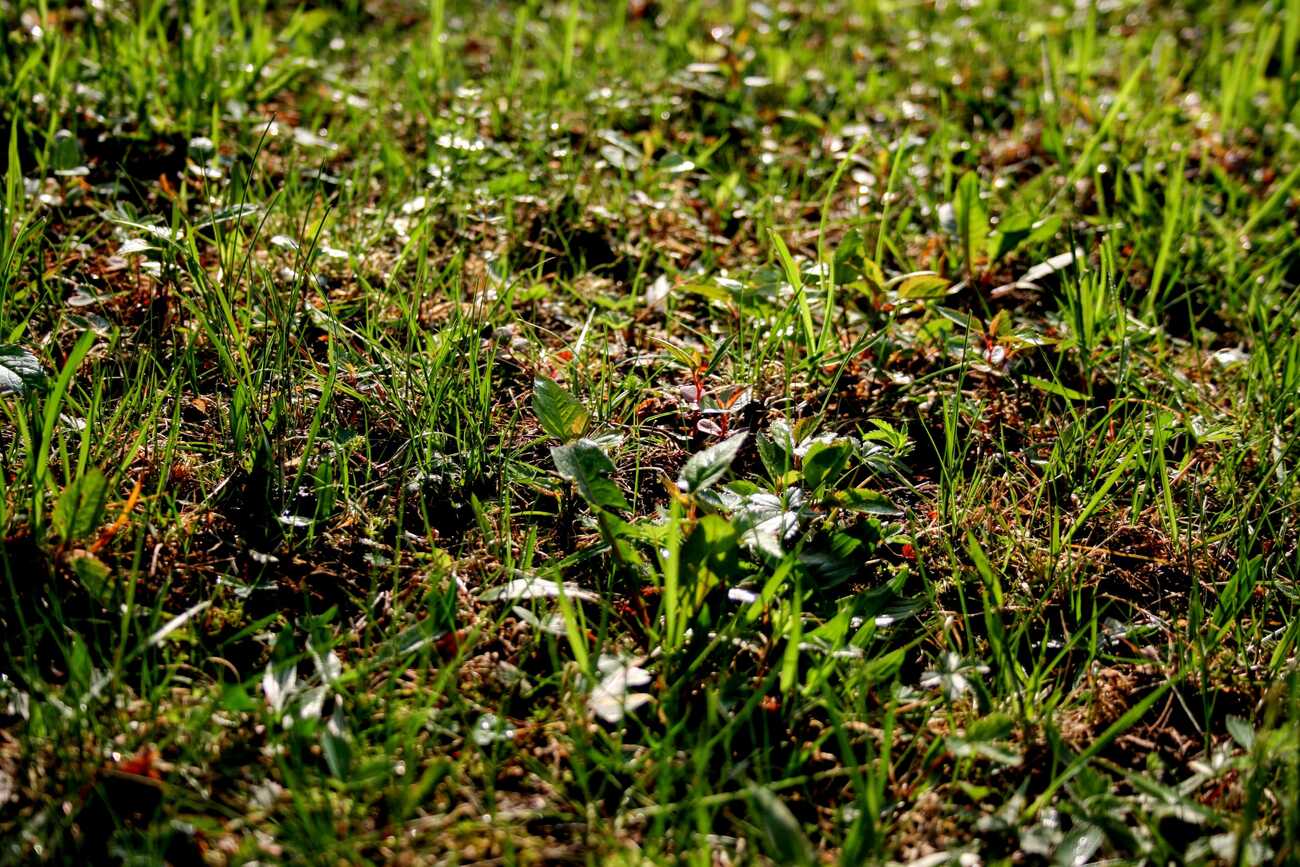
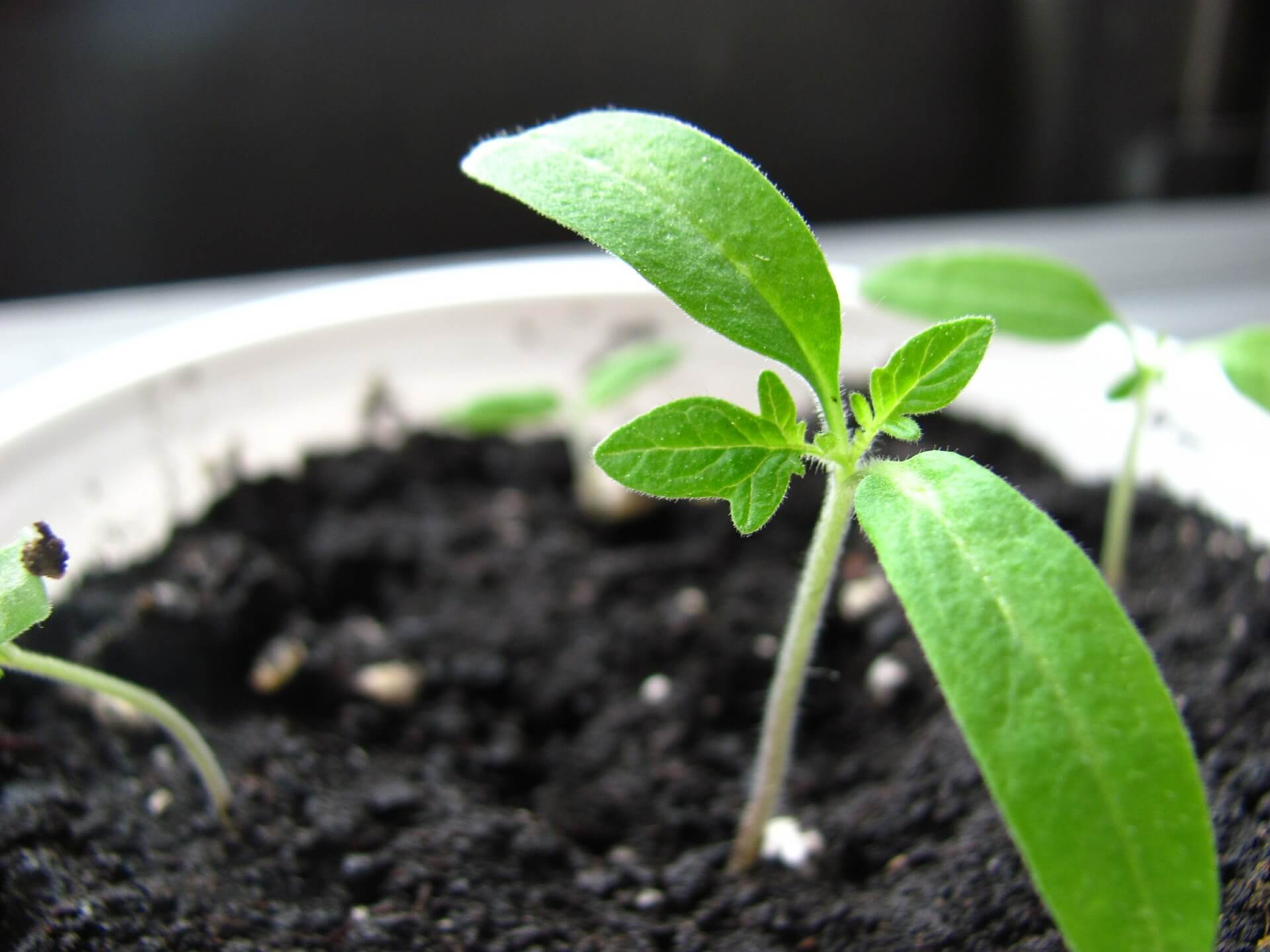

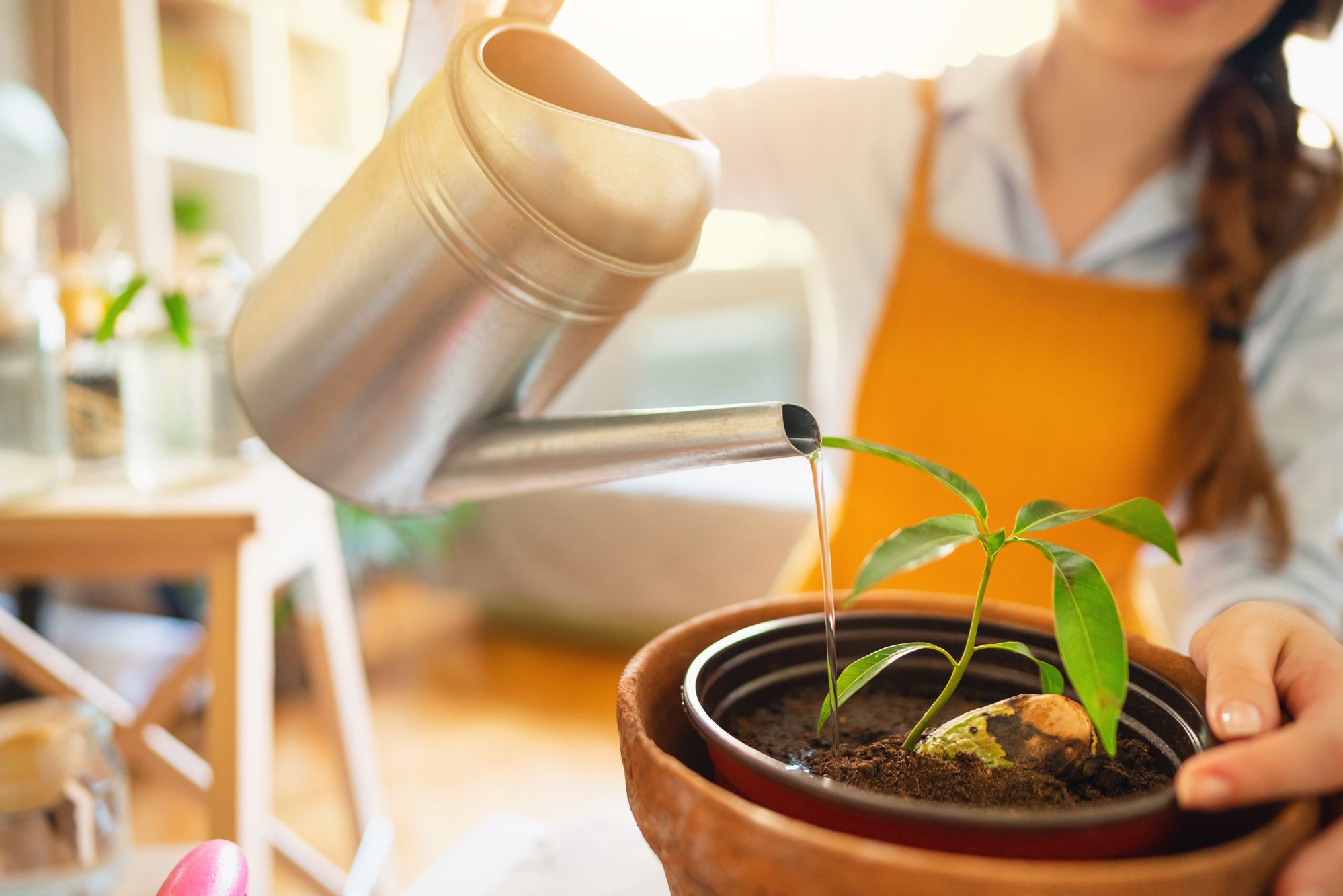

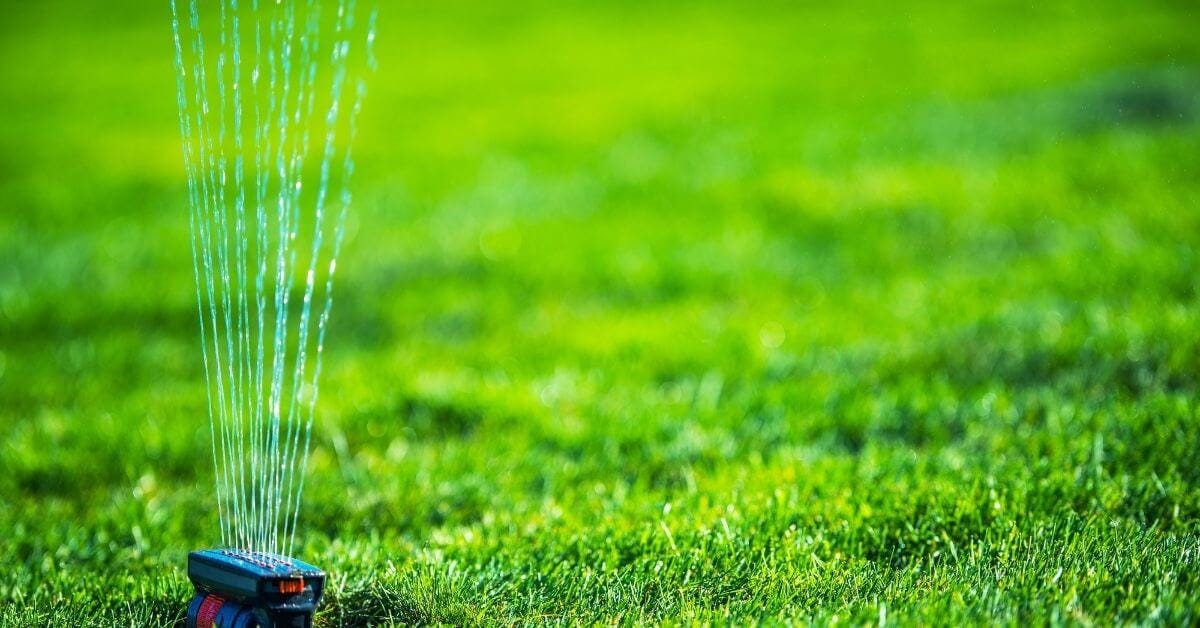
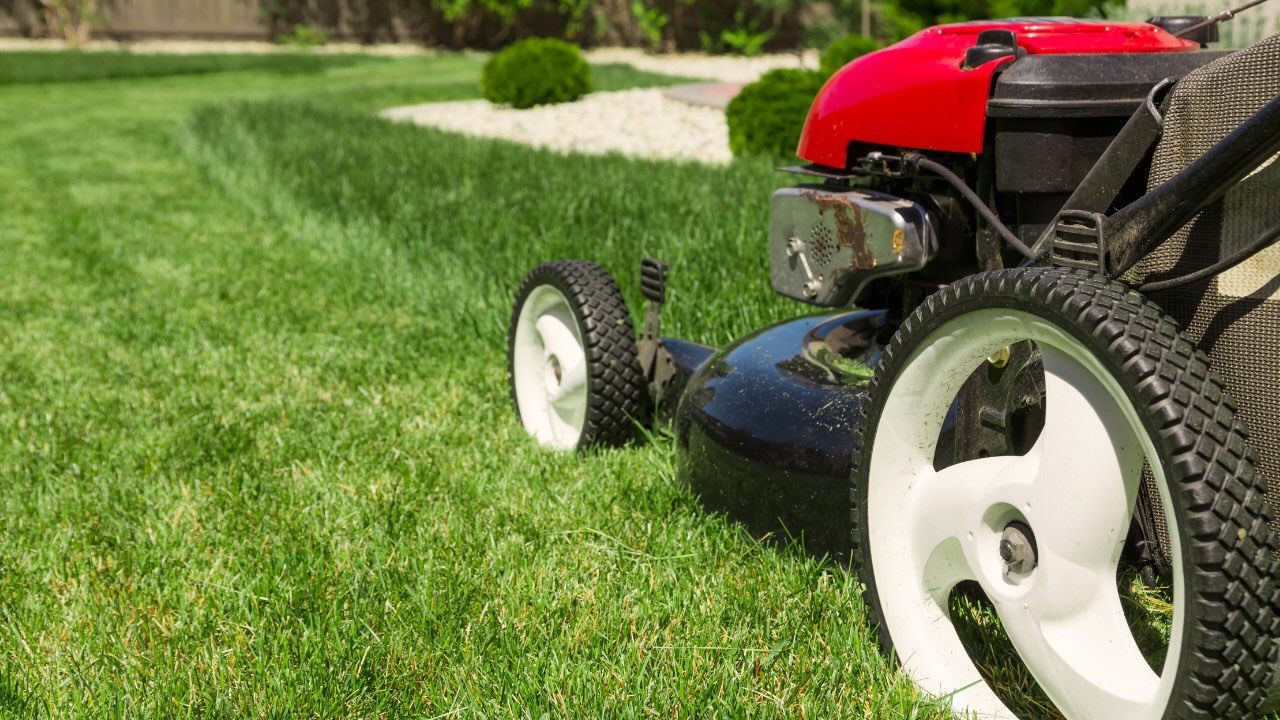
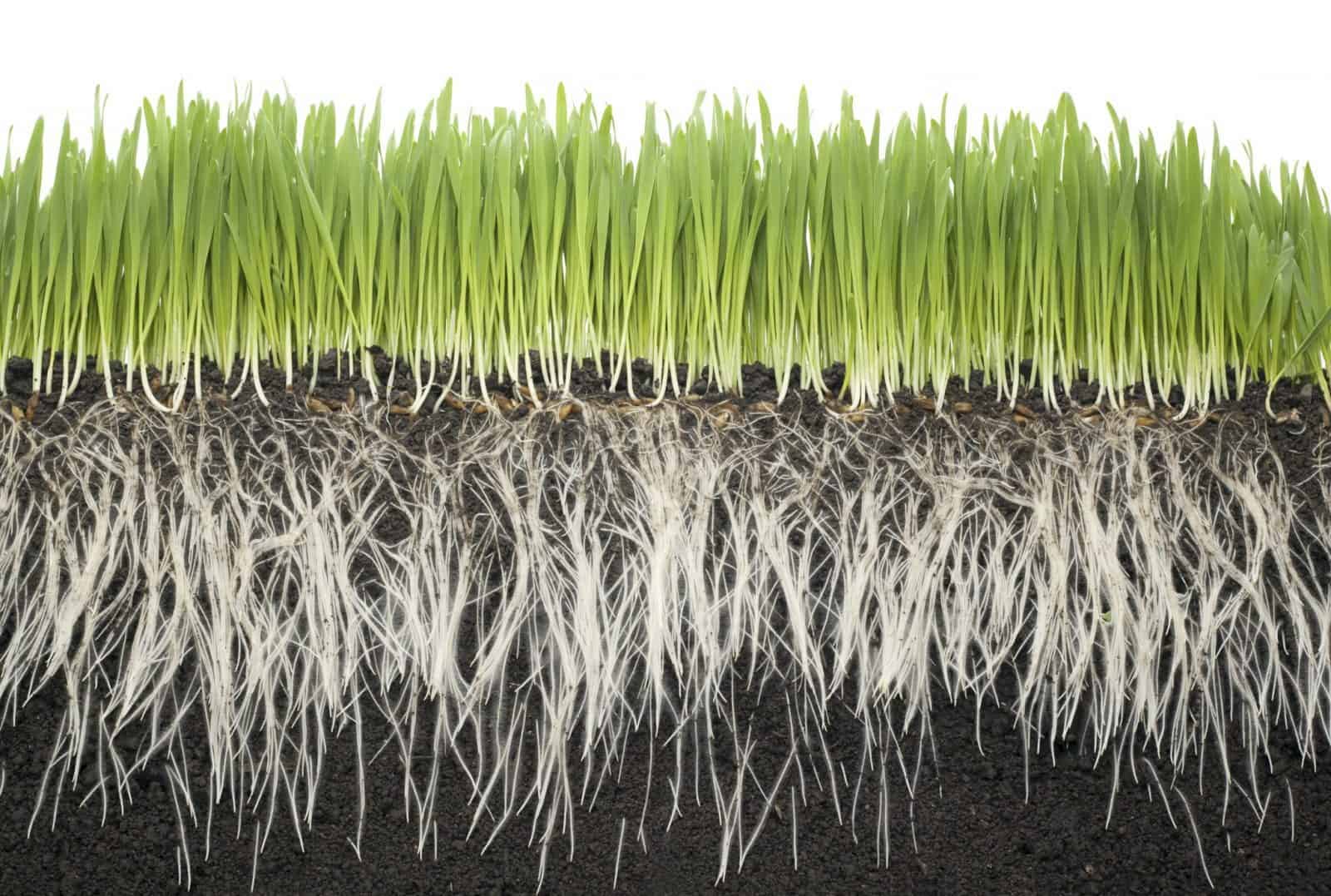
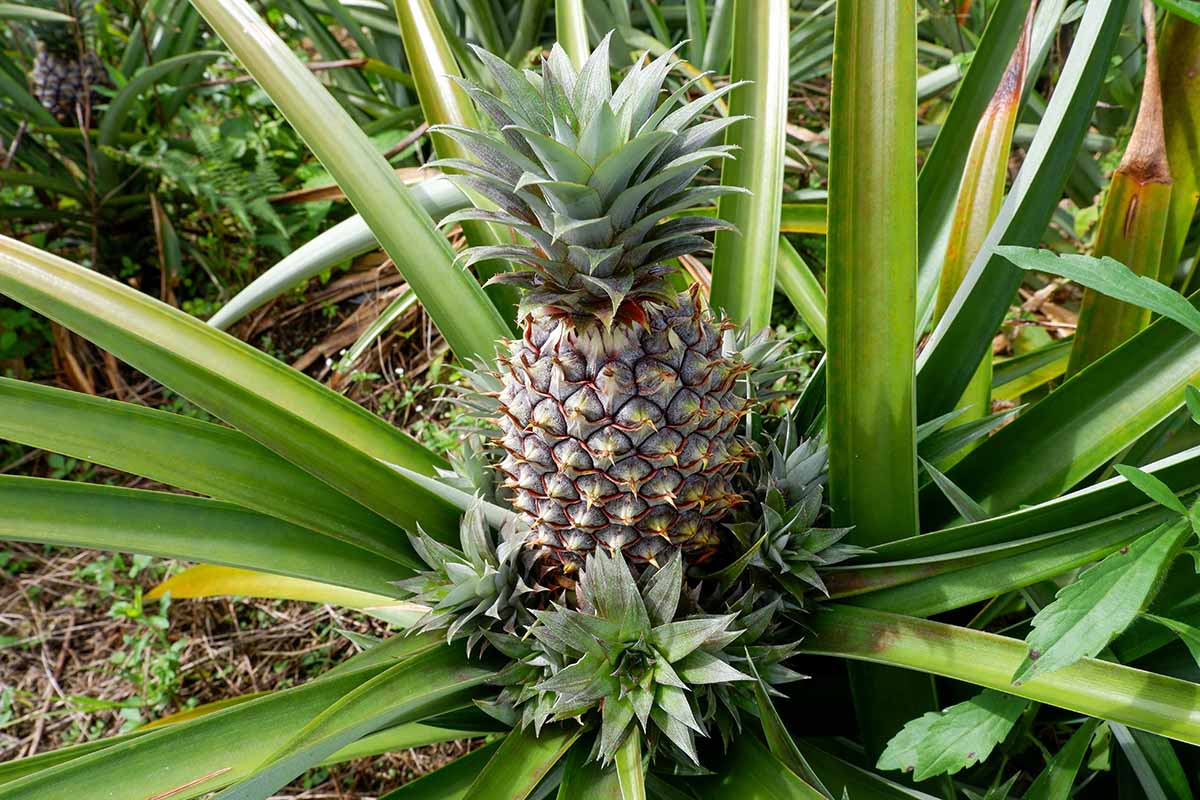



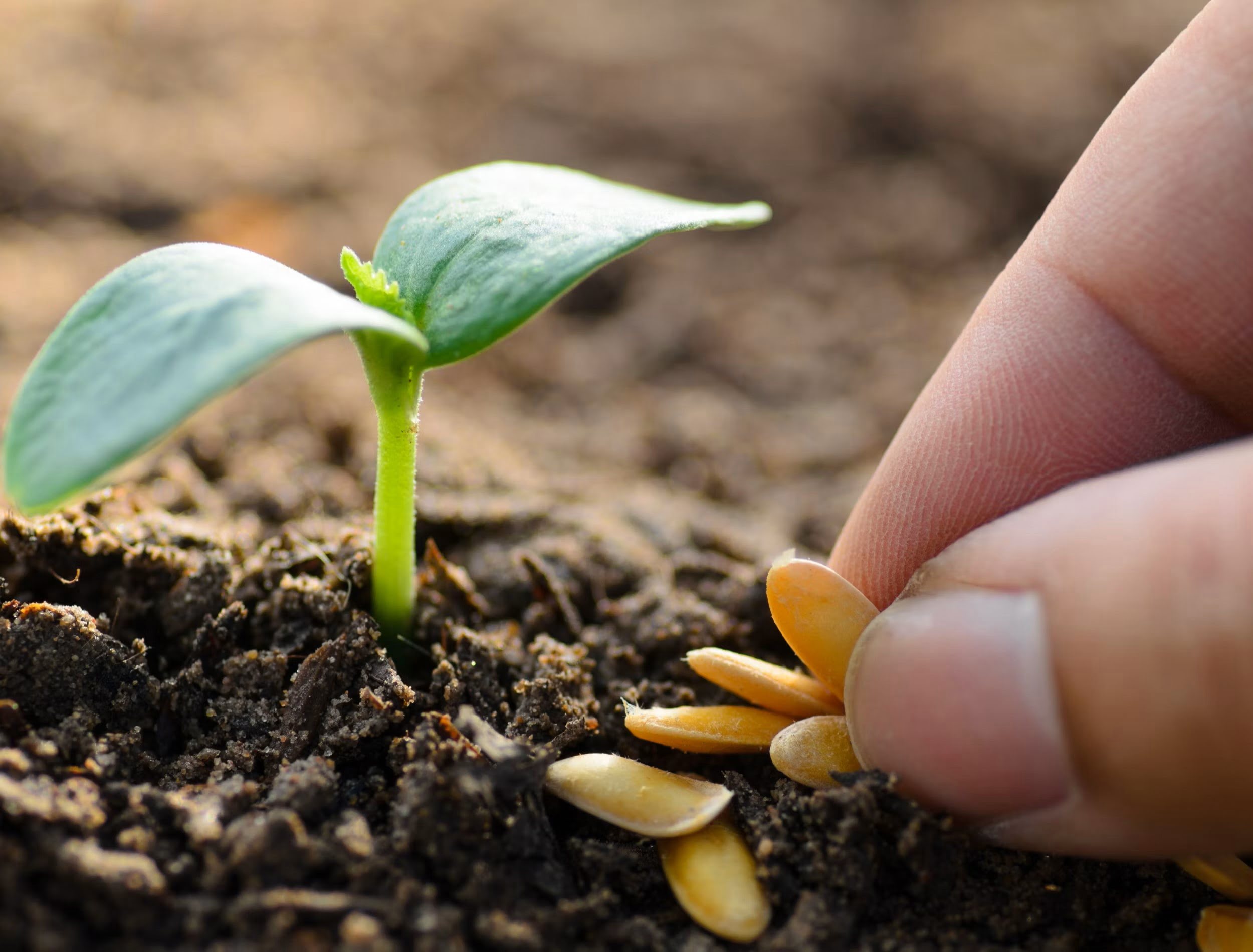

0 thoughts on “How To Make Grass Seed Grow Faster”